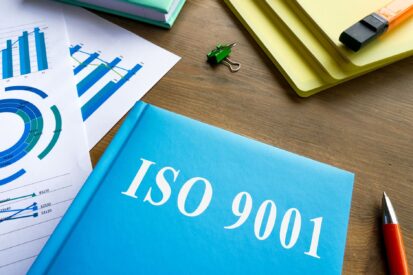In today’s increasingly eco-conscious society, organisations are under pressure to reduce their environmental footprint and demonstrate sustainable business practices. Achieving environmental excellence requires systematic planning, monitoring, and continuous improvement. Implementing an Environmental Management System (EMS) aligned with the ISO 14001 standard can help your organisation minimise its environmental impact, comply with regulatory requirements, and promote a sustainable future. In this article, we will explore the core principles of ISO 14001, the benefits of adopting an EMS, and practical guidance on managing your organisation’s environmental challenges.
ISO 14001 is an internationally recognised standard that provides a framework for organisations to create, implement, and continually improve an EMS. The standard focuses on proactive management of environmental risks, legal compliance, and ongoing performance improvement. By adopting an ISO 14001-compliant EMS, organisations can optimise resource usage, reduce waste, enhance environmental performance, and foster a culture of corporate sustainability.
At ISO 9001 Consultants, our team of experienced consultants is committed to assisting organisations across Australia in implementing and maintaining EMSs that adhere to ISO 14001 standards. In the following sections, we will discuss the essential aspects of ISO 14001, provide practical guidance for managing environmental challenges, and offer insights on leveraging the benefits of environmentally responsible business practices. Equip your organisation with the strategies and systems necessary to build a sustainable business model, reduce your environmental impact, and set the foundation for long-term success and growth.
Key Principles of ISO 14001
1. Environmental Policy and Commitment
Establishing a strong environmental policy is the foundation of an effective EMS. Organisations should outline their commitment to environmental protection, pollution prevention, and regulatory compliance. This policy should be endorsed by top management, communicated throughout the organisation, and made available to relevant stakeholders.
2. Risk-Based Approach and Aspect-Identification
A vital aspect of implementing an EMS aligned with ISO 14001 is identifying and assessing the environmental aspects and impacts of your organisation’s operations, products, and services. By adopting a risk-based approach, businesses can prioritise actions, allocate resources effectively, and focus on the most significant environmental concerns.
3. Legal Compliance and Regulatory Requirements
Organisations must maintain compliance with all relevant environmental laws and regulations. ISO 14001 requires businesses to identify applicable legal requirements, monitor changes, and ensure that the necessary control measures are in place to maintain compliance.
4. Continual Improvement and Monitoring
ISO 14001 encourages a culture of continual improvement in environmental performance, requiring organisations to set, review, and update environmental objectives and targets regularly. This process involves monitoring and measuring performance, conducting audits, and evaluating the overall effectiveness of the EMS to identify areas for improvement.
Implementing an ISO 14001-Based Environmental Management System
1. Gap Analysis and Planning
Begin the implementation process by conducting a gap analysis to evaluate your current environmental performance and management practices against the ISO 14001 requirements. The results will form the basis for your EMS implementation plan, comprising necessary steps, assigned responsibilities, and target timeframes.
2. Development and Implementation of Controls
Based on your environmental risk assessment, develop and implement appropriate controls and measures to minimise your organisation’s environmental impact. This involves optimising resource consumption, reducing waste and emissions, and implementing best practices to minimise negative environmental effects.
3. Employee Training and Awareness
Invest in employee training and promote environmental awareness throughout your organisation. Ensure that employees understand the company’s environmental policy, their individual responsibilities, and the environmental aspects relevant to their roles. Engaged and informed employees are more likely to contribute to the successful implementation of the EMS.
4. Documentation and Record Keeping
Proper documentation and record-keeping are fundamental to ISO 14001 compliance. Maintain up-to-date records of your EMS implementation, environmental performance data, and evidence of compliance with legal requirements. This information is essential for tracking progress, evaluating the effectiveness of your EMS, and identifying areas for improvement.
5. Internal Audits and Management Reviews
Conduct regular internal audits of your EMS to assess compliance with ISO 14001 requirements and the effectiveness of your controls. Identify and address any non-conformities through corrective actions and continually improve your environmental performance. Conduct management reviews to evaluate the overall effectiveness of your EMS, set new objectives and targets, and ensure alignment with your organisation’s strategic direction.
Achieving ISO 14001 Certification
1. Pre-Audit and External Audit
Before undertaking external certification, conduct a pre-audit to ensure your EMS complies with ISO 14001 requirements and that any identified gaps have been addressed. Seek certification from an accredited certification body, demonstrating your organisation’s commitment to environmental excellence and gaining recognition among stakeholders.
Leveraging the Benefits of ISO 14001
1. Enhanced Environmental Performance and Efficiency
An ISO 14001-compliant EMS can significantly improve your organisation’s environmental performance by minimising waste, reducing emissions, and optimising resource usage. Such improvements can lead to cost savings, increased operational efficiency, and a reduced impact on the environment.
2. Compliance and Risk Reduction
Implementing an EMS based on ISO 14001 can help organisations identify and manage risks, ensuring compliance with relevant environmental laws and regulations. This proactive approach to risk management can reduce the potential for penalties and negative publicity associated with non-compliance.
3. Business Growth and Reputation Enhancement
Achieving ISO 14001 certification demonstrates a commitment to environmental responsibility and sustainable business practices. This can help organisations strengthen their reputation, attract eco-conscious customers, and unlock new business opportunities with environmentally driven stakeholders.
Conclusion: Achieving Environmental Excellence with ISO 14001
Investing in an ISO 14001-compliant EMS can provide significant benefits for your organisation, including improved environmental performance, cost savings, risk reduction, and enhanced reputation. By committing to environmentally responsible business practices and adopting a systematic approach to environmental management, your organisation can protect the environment and drive sustainable growth.
If you’re looking for reliable ISO consultancy services in Sydney, look no further than ISO 9001 Consultants. Our team of experts specialises in helping businesses of all sizes achieve ISO 9001 certification, ensuring that your organisation is operating at the highest level of quality management.








Users Comments
Get a
Quote